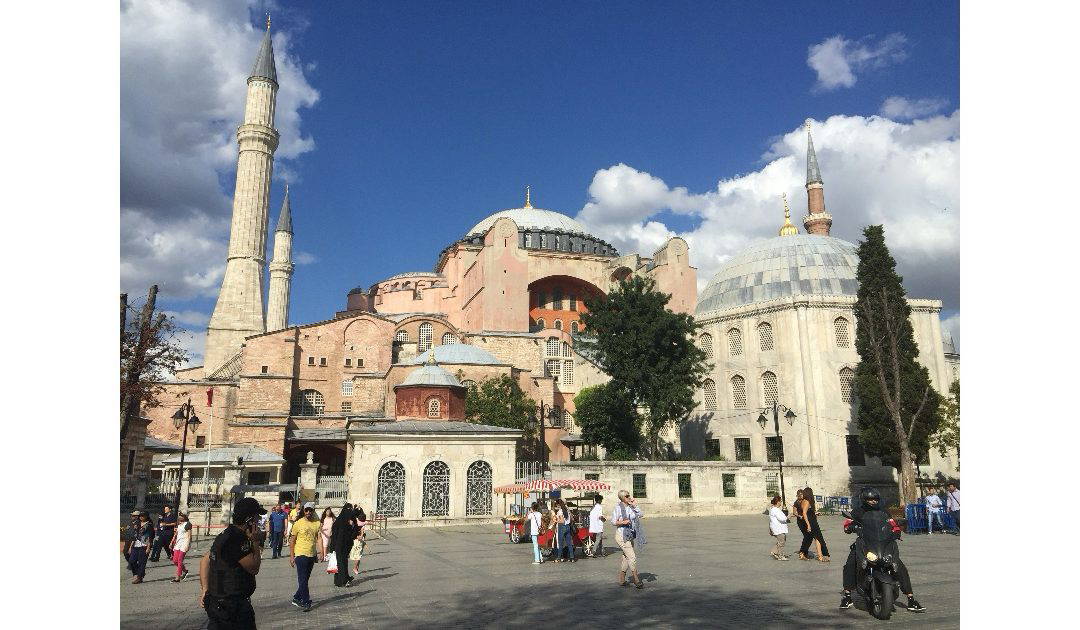On the 24th of September, 787, the Second Council of Nicaea assembled at the church of Hagia Sophia. The Second Council of Nicaea addressed the iconoclast controversy that had deeply divided the Byzantine Empire. Iconoclasm, the rejection and destruction of religious images, was championed by certain emperors and factions who viewed icons as idolatrous.
Empress Irene of Athens, acting as regent for her young son Constantine VI, convened the council to restore the veneration of icons. The council, attended by bishops and representatives from both the Eastern and Western Churches, distinguished between veneration (proskynesis) and worship (latreia), clarifying that honouring icons was not equivalent to idolatry.
The Second Council of Nicaea reaffirmed the use of religious images, supporting the belief that icons served as windows to the divine, aiding the faithful in their spiritual contemplation. This decision had profound implications for Byzantine art, leading to a flourishing of iconography that continues to influence Eastern Orthodox Christianity. But what, you may ask, was the First Council of Nicaea about.
The First Council of Nicaea was convened by Emperor Constantine I, marking the beginning of an era where Roman emperors actively influenced Christian doctrine. The council took place in Nicaea (modern-day İznik, Turkey) and was primarily summoned to address the Arian controversy. Arius, a priest from Alexandria, propagated the belief that Jesus Christ was not of the same essence as God, challenging the core of Trinitarian doctrine.
Approximately 300 bishops attended, representing various regions of the Roman Empire. The council’s key achievement was the formulation of the Nicene Creed, a statement affirming the consubstantiality of the Son with the Father, which became a cornerstone of Christian orthodoxy. This creed declared Jesus Christ as “begotten, not made, being of one substance with the Father,” directly refuting Arianism.
Additionally, the council established a uniform date for Easter, sought to standardise liturgical practices, and set precedents for church administration. The significance of the First Council of Nicaea lies not only in its doctrinal outcomes but also in illustrating the fusion of imperial authority with ecclesiastical governance.
Claire and I were lucky enough to visit the Hagia Sophia when we took the Orient Express to Istanbul in 2016. The Hagia Sophia was commissioned by Emperor Justinian I in 532 AD following the Nika riots, the Hagia Sophia was designed by the architects Anthemius of Tralles and Isidore of Miletus. Completed in 537 AD, it served as the cathedral of Constantinople for nearly a thousand years.
The Hagia Sophia’s architectural brilliance is characterised by its massive dome, which appears to float effortlessly above the central nave, supported by an innovative system of pendentives. This engineering marvel created an ethereal, luminous space, accentuated by mosaics, marble columns, and intricate decorative elements.
Religiously, the Hagia Sophia was more than an architectural feat; it was a symbol of the divine order on Earth, embodying the unity of church and state under Byzantine rule. It hosted imperial ceremonies, ecclesiastical councils, and daily liturgies, reinforcing Constantinople’s status as the heart of Eastern Christendom.
Following the Ottoman conquest of Constantinople in 1453, Mehmet the Conqueror converted the Hagia Sophia into a mosque, adding minarets and Islamic calligraphy while preserving much of its Christian iconography beneath layers of plaster. In 1935, under the secular reforms of Mustafa Kemal Atatürk, it was transformed into a museum, reflecting Turkey’s new national identity. However, in 2020, it reverted to a mosque, reigniting discussions about its cultural and religious significance.

